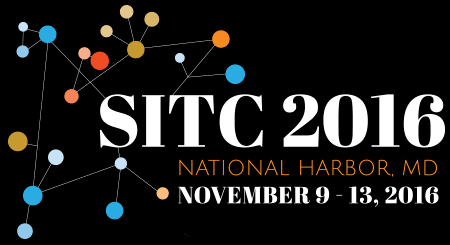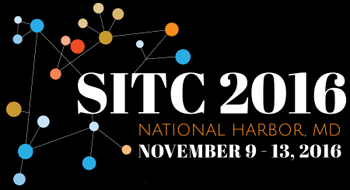State-of-the-Art Immunotherapies: Challenges and Opportunities
Phase I/II CANON study: oncolytic immunotherapy for the treatment of non-muscle invasive bladder (NMIBC) cancer using intravesical Coxsackievirus A21
In a session focused on cutting-edge immunotherapeutic approaches, Nicola Annels, PhD (University of Surrey) presented phase I/II data on Coxsackievirus A21 (CVA21), a novel oncolytic virus targeted to ICAM-1, in non-muscle invasive bladder cancer (NIMBC). In the CANON study, patients with NIMBC, which has characteristic upregulation of ICAM-1 expression, received neo-adjuvant CVA21 or low dose mitomycin C plus CVA21 prior to surgical removal (TURBT). In first phase of this study, patients in Cohorts 1, 2, and 3 (n=3 per cohort) received a single dose of 1 x 108 TCID50, 3 x 108 TCID50, and two doses of 3 x 108 TCID50, respectively, to investigate the tolerance of intravesical CVA21. In the second part of this study, Cohort 1 patients received a single dose of CVA21 at 3 x 108 TCID50, and Cohort 2 (n=3) patients received two doses of CVA21 at 3 x 108 TCID50 in combination with mitomycin C. The data from this preliminary work illustrated that intravesicular CVA21 alone or in combination was well tolerated, with no grade 2 or higher treatment-related adverse events (AEs) reported. Moreover, clinical activity of CVA21 was also demonstrated through viral-induced surface hemorrhage and inflammation as well as tumor-specific viral replication, with evidence of viral-induced apoptotic tumor cell death. Multispectral immunohistochemistry demonstrated increases in immune cell infiltration in NIMBC tissue. Gene expression analyses also illustrated widespread increases in interferon-induced genes, viral RNA, and immune checkpoint genes. Furthermore, urinary analysis indicated that 11/16 (69%) patients had increased levels of HMGB1, an important mediator of inflammation. Together, these results demonstrate the tolerability of CVA21 and evidence for subsequent local and potential systemic anti-tumor immune responses, warranting further study of this novel oncolytic virus for bladder cancer.
IL-15 primes an mTOR-regulated gene-expression program to prolong anti-tumor capacity of human natural killer cells
A presentation by Andreas Lundqvist (Karolinska Institutet) focused on the potential of IL-15 to extend the anti-tumor activity of natural killer (NK) cells through mTOR-mediated metabolic processes. In this study, IL-15-treated NK cells maintained higher levels of activity with reduced levels of apoptosis. Upon co-culture with tumor cells or exposure to tumor supernatant, IL-15 activated cells showed a higher level of proliferation and cytotoxic activity. Tumor-derived prostaglandin-E2 also suppressed IL-2 cultured NK cells, while IL-15- stimulated cells remain activated. Genome-wide expression analysis showed a correlation between mTOR signaling and genes related to cellular metabolism and respiration, which could be blocked by mTOR inhibition. Moreover, mTOR-independent STAT-5 signaling contributed to improved NK cell function during cytokine activation but not during withdrawal. This study provides increased understanding of the mechanisms regulating activation and maintenance of tumor-reactive NK cells and supports the use of IL-15 with adoptive NK cell-based therapies.
Reactivating the anti-tumor immune response by targeting innate and adaptive immunity in a phase I/II study of intratumoral IMO-2125 in combination with systemic ipilimumab in patients with anti-PD-1 refractory metastatic melanoma
Building on the success of immune checkpoint inhibition in melanoma, Cara Haymaker, PhD (MD Anderson Cancer Center) presented phase I/II data of intratumoral TLR9 agonist, IMO-2125, alone or in combination with ipilimumab (anti-CTLA-4) in patients with anti-PD-1-refractory metastatic melanoma. At the time of data cut-off, 10 patients were treated with IMO-2125 intratumorally, in doses escalating from 4mg to 32mg, at weeks 1, 2, 3, 5, 8, and 11, and combined with ipilimumab (3 mg/kg) on weeks 2, 5, 8, and 11. Safety data in the combination group showed five patients with a grade 3 treatment-related adverse event (AE), and one with a grade 4 treatment-related AE. No treatment discontinuations due to an AE or treatment-related deaths were reported. The early response data reported showed a 30% (3/10) response rate, two patients with partial response and one patient with an unconfirmed complete response. To determine the mechanism of action underlying this immune modulation, fresh tumor biopsies were analyzed using immunohistochemistry, flow cytometry, and gene expression analysis. Flow cytometric analyses illustrated rapid maturation of CD1c+ CD303- myeloid dendritic cell 1 (mDC1) subset in the IMO-2125 injected tumor 24 hours post-treatment compared to pre-treatment biopsies. Moreover, biopsies from responders demonstrated a higher rate of proliferation (Ki67 index) and activation (level of CD56+ CD8+ T cells) of CD8+ T cells vs. pretreatment biopsies. Activity was further demonstrated in distant lesions through immune infiltration and expansion of T cell clones in responding patients. Analysis of peripheral blood indicated an increase in circulating IFNγ levels compared with pretreatment controls. Overall, combination therapy with IMO-2125 and ipilimumab was well tolerated and showed preliminary activity in a refractory metastatic melanoma population. Further studies are underway to evaluate the role of IMO-2125 in combination with pembrolizumab after evidence of upregulation of PD-L1 in post-injection biopsies.
Metabolic and Age-Associated Dysregulation of Anti-Cancer Immunity
NAD+-Sirt1 Axis is central to the unique immune-metabolic phenotype of TH1/17 hybrid cells in regulating its enhanced anti-tumor potential
Shilpak Chatterjee, PhD (Medical University of South Carolina) discussed the use of CD4+ T cells in adoptive therapies to combat malignancy. Both Th1 and Th17 subsets of CD4+ T cells have shown promising anti-tumor responses, but they also demonstrate poor persistence and susceptibility to functional suppression, respectively. Dr. Chatterjee’s group sought to determine whether hybrid Th1/Th17 cells generated in vitro could yield potent and durable anti-cancer immunity. Th1/Th17 cells produced high levels of both IFNγ and IL-17 while retaining the genes associated with stemness that allow for longer persistence. In addition, these cells demonstrated an impressive ability to control B16 melanoma cells in adoptive transfer experiments. Th1/17 cells were metabolically distinct from either the Th1 or Th17 cell subsets in having intermediate levels of glycolysis and high oxidative phosphorylation due to increased glutaminolysis. Further investigations into metabolite signatures revealed high levels of nicotinaminde adenine dinucleotide (NAD+) in Th1/17 cells, which was found to be responsible for the potent anti-tumor response via NAD+ mediated activation of Sirt1. Hybrid cells were found to have low levels of CD38, the NADase regulating the expression of NAD+. Further studies are warranted to investigate translational applications of these data, and to advance development of antibodies against CD38 in an effort to maintain higher intracellular NAD+ levels, and a stronger anti-tumor response.
The Wnt5a-beta-catenin pathway triggers a metabolic switch that drives indoleamine 2,3-dioxygenase activity and dendritic cell tolerization in the melanoma microenvironment: optimizing checkpoint inhibitor immunotherapy
Tolerized dendritic cells (DC) produce indoleamine 2,3-dioxygenase (IDO), which contributes to the immunosuppressive tumor microenvironment (TME) by promoting differentiation of regulatory T cells (Treg). Brent A. Hanks, MD, PhD (Duke University Medical Center) presented data describing tumor-driven metabolic reprogramming as a mechanism that drives dendritic cell tolerization. Using models of melanoma, it was shown that the reprogramming of DC in the TME is due to paracrine Wnt5a-β-catenin signaling, which shifts DC metabolism from glycolysis to fatty acid oxidation (FAO). Both in vitro and in vivo models demonstrated that FAO by DC results in the suppression of IL-6 and IL-12 cytokines and enhances the synthesis of IDO, leading to the generation of Treg. Inhibition of paracrine Wnt5a signaling via treatment with the blocking antibody Ipafricept resulted in fewer Treg cells and increased tumor control, which was further enhanced by addition of anti-PD-1 antibody therapy. Thus, Wnt5a represents an attractive therapeutic target to combine with immune checkpoint blockade.





Important Dates
Regular Abstracts Published in JITC
November 8, 2016
Late-Breaking Abstracts Published in JITC
December 8, 2016
Thank You, Supporters!
Thank you, SITC 2016 supporters. Because of your generosity, SITC 2016 was a great success!
Interested in supporting other SITC programs? Confirm your support today!


Connect with SITC!